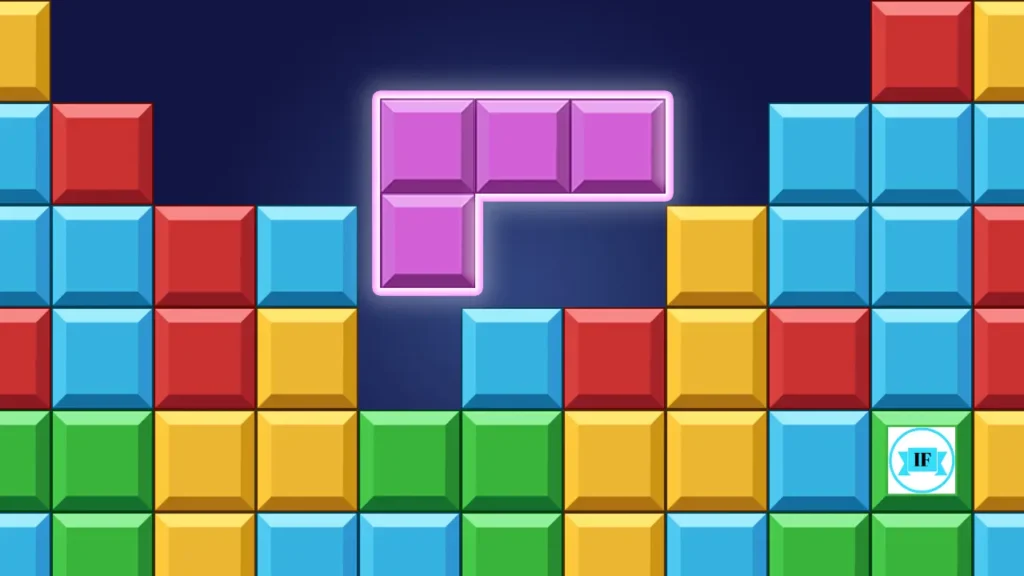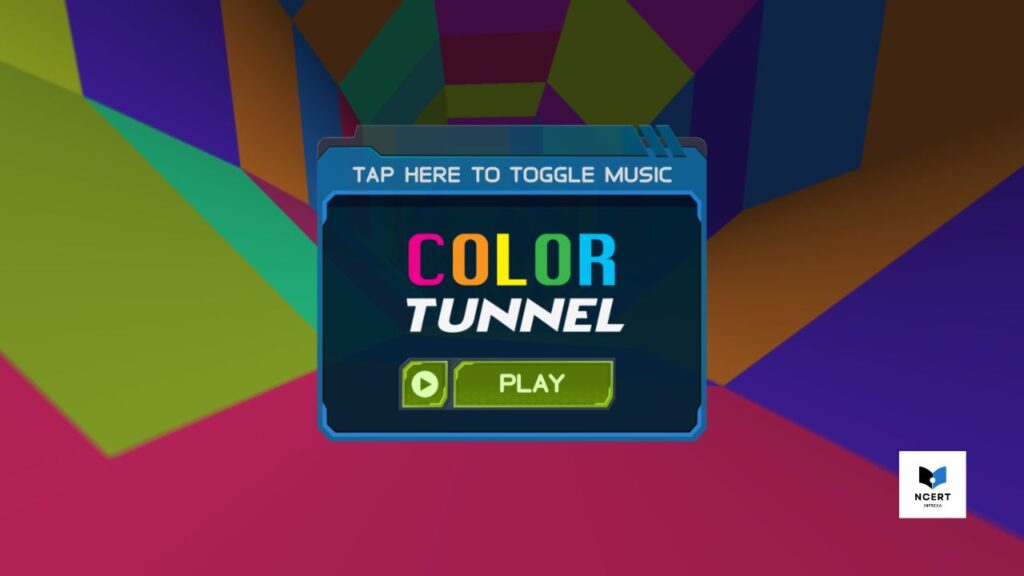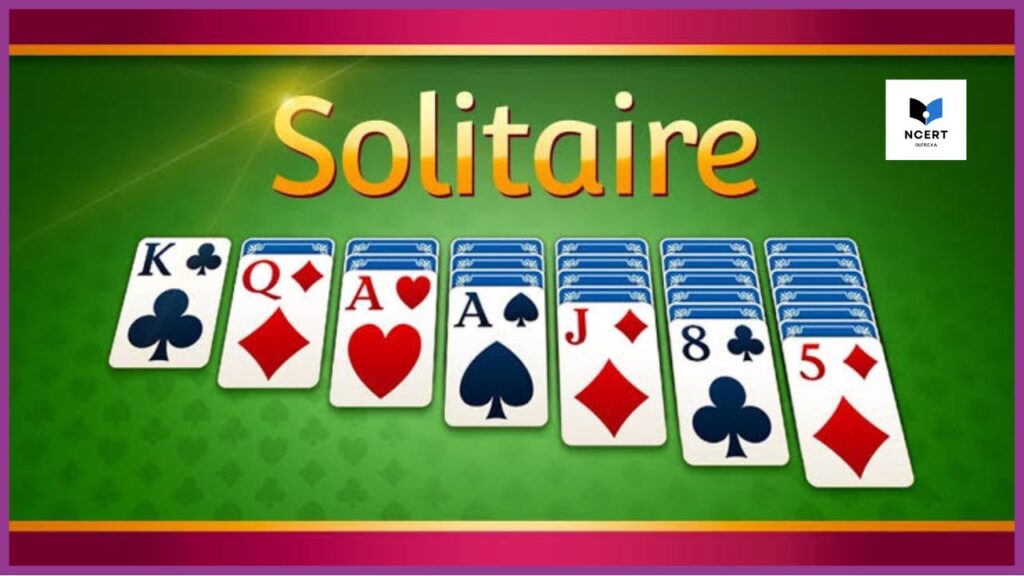At its heart, Block Blast is a grid-based puzzle game played on an 8×8 board. Your goal is simple: survive as long as possible by preventing the board from filling up.
The game provides you with three different shapes at a time. Your task is to drag and drop these blocks onto the grid. There are no time limits, so you can take all the time you need to plan your moves.
Once a horizontal or vertical line of blocks is completely filled from edge to edge, that entire line disappears. This creates more space for you to place new blocks and continue playing. The game is over when you are given a set of three blocks and there is no possible way to place any of them on the board.
The key distinction from other puzzle games (like Tetris) is that you cannot rotate the blocks. The shapes you receive are fixed, which forces you to think spatially and plan your placements carefully. Every block you place, regardless of whether it clears a line, remains on the board until a line is completed. Points are awarded for every line cleared, and the ultimate goal is to achieve the highest score possible.
Controls and User Interface
The game is designed with simplicity in mind, so the controls are straightforward and intuitive.
- Mouse: This is the primary control method for the PC version of the game.
- Drag & Drop: To move a block, click on it and hold the left mouse button. Drag it to your desired location on the grid.
- Placement: Release the left mouse button to drop the block into place.
- Navigation: Use the mouse to navigate the pause menu and other in-game options.
- Keyboard: As a pure puzzle game, there are no specific keyboard shortcuts for moving blocks. However, some players may find these common PC shortcuts helpful:
- F11: Use this key to enter and exit full-screen mode, which can help you focus on the board without distractions.
- Esc: This key can often be used to open the pause menu.
Strategic Principles
Simply filling lines as they appear is a recipe for an early game over. To master Block Blast, you need to think several moves ahead. Here are the core strategic principles that have helped me consistently achieve high scores:
- The Three-Block Problem: The biggest challenge in the game is managing the three blocks you are given. Before you place the first block, look at all three. Think about where each one could potentially go. If you place the first block in a spot that eliminates future options for the other two, you’re setting yourself up for failure. A key strategy is to use the easiest-to-place blocks first, saving the more difficult ones (like the large L-shapes or the 3×3 square) until you have a clear spot for them.
- Keep the Board Open: This is my number one tip. The number one reason a game ends prematurely is a lack of available space. Always prioritize creating open lanes and large, contiguous spaces. Avoid leaving small, single-block gaps, especially in the corners and along the edges of the board. These “trapped” gaps are almost impossible to fill later in the game.
- Horizontal vs. Vertical Lines: Both lines give you points and clear space, but in my experience, focusing on vertical lines first can be a powerful strategy. A single misplaced block in a vertical column can be difficult to fix, while a horizontal line is easier to clear with smaller, more common blocks. By clearing vertically, you maintain more horizontal space for a wider variety of block shapes.
- The Power of Combos and Chain Reactions: One of the most satisfying parts of Block Blast is triggering a Combo (clearing multiple lines with a single block). Not only does this give you a massive point bonus, but it also creates a large amount of space at once, which can get you out of a difficult situation. Always be on the lookout for opportunities to clear two or three lines at once.
Advanced Techniques: From Player to Master
Once you have the strategic principles down, you can start incorporating these more advanced techniques to truly dominate the leaderboards.
- The perimeter of the board is your most valuable real estate. The corners and edges are the hardest places to fill, especially with the large, L-shaped or T-shaped blocks. Never place a block in a corner unless it completes a line. The goal is to keep these areas as open as possible to save them for difficult pieces.
- You may have noticed that sometimes when you drag a block, it changes color when it hovers over certain areas. This isn’t just for show. It’s a visual cue that indicates that placing the block in that specific spot will clear a line. Pay close attention to this cue, as it’s a critical tool for identifying potential combos you may have overlooked.
- After you place a block, you will get a new one. A common mistake is to place a block without considering what a future, difficult piece (like the 3×3 square) might look like. Always keep a mental note of where you could potentially place a large block, even if you don’t have it yet. This foresight is what separates good players from great ones.
- Since there’s no time limit, there’s no penalty for taking your time. I’ve spent minutes staring at the board and the upcoming blocks, mentally placing them in different spots to see the outcome. Don’t feel pressured to act. This is a game of strategy, not speed.
In my experience, following these comprehensive guidelines transforms your gameplay from random placement to a deliberate, strategic masterclass. It shifts your focus from simply clearing lines to actively creating a board that gives you the maximum number of future opportunities. By thinking ahead, managing your space, and understanding the nuances of the game, you’ll find that your scores will soar and you’ll enjoy the game on a whole new level.
Play Online






